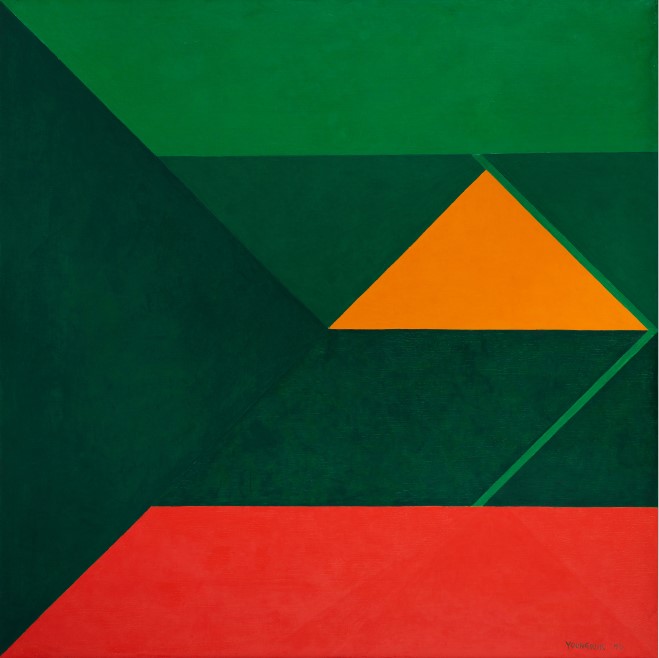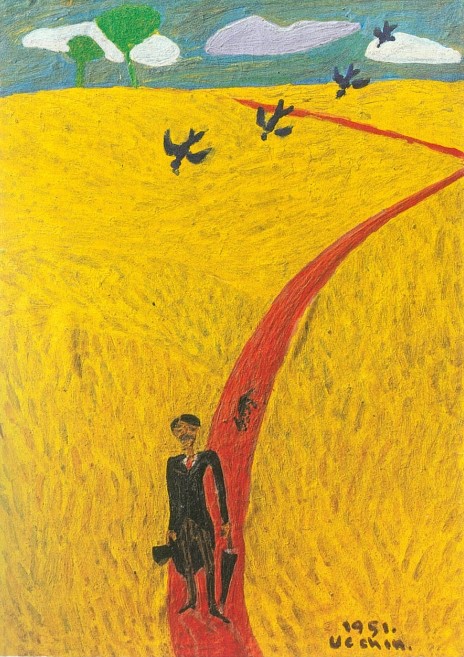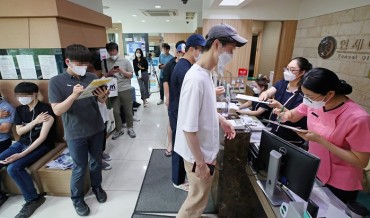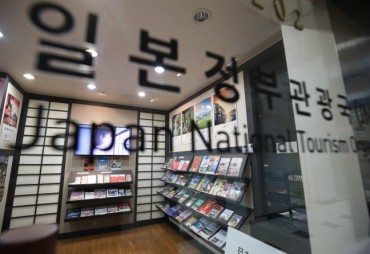
Korean contemporary artist Yoo Young-kuk’s painting “Mountain” (1970) is seen in this photo provided by the National Museum of Modern and Contemporary Art.
SEOUL, Jan. 10 (Korea Bizwire) – The National Museum of Modern Contemporary Art (MMCA) said Tuesday it will expand collaborations with major galleries and museums abroad to promote major Korean artworks in the global market.
The MMCA said it will join hands with the Solomon R. Guggenheim Museum to present over 100 artworks by Korea’s major experimental artists and some 40 pieces and archival materials from its collection.
The joint exhibition, “We Proclaim: Experimental Art in South Korea 1960s-1970s,” will be held in Seoul from May to July and tour New York and Los Angeles from September to May 2024.
The museum will also present “Watch and Chill 3.0: Streaming Suspense” from February and May in Seoul to showcase the global collaborative art project.
The MMCA, the National Gallery of Victoria from Australia, Peabody Essex Museum of the U.S., and TONO Festival of Mexico will share their media collections and local artists’ works on a streaming platform to allow audiences to access them online.
“It will further develop Korean art discourses through joint exhibitions, traveling exhibitions and cooperation with foreign institutions,” the MMCA said in a release.

Korean modern artist Chang Ucchin’s painting “Self-portrait” (1951) is seen in this photo provided by the National Museum of Modern and Contemporary Art.
Major exhibitions held in Korea will be traveling abroad this year.
The special exhibition on Korean polychrome painting “Prayer for Life: The role of Korean Polychrome Painting” will be co-hosted by the San Diego Museum of Art, Korean Cultural Center Los Angeles and the Korean Culture and Information Service from October to February 2024.
In November, “The Korean Art in the 20th Century” will feature both Korean traditional and contemporary at the National Art Museum of China.
This year, the MMCA plans to publish a catalog about late Samsung Chairman Lee Kun-hee’s extensive collection of artworks and make it available online through the museum website.
It will also publish “White Book” of the conservation and restoration process of late video artist Paik Nam-june’s 18-meter flickering video tower, “The More, The Better.”
The media artwork, which was installed in 1988 at the museum’s Gwacheon branch, south of Seoul, reopened in September 2022 following a four-year hiatus after some old monitors were replaced and fixed.
(Yonhap)






